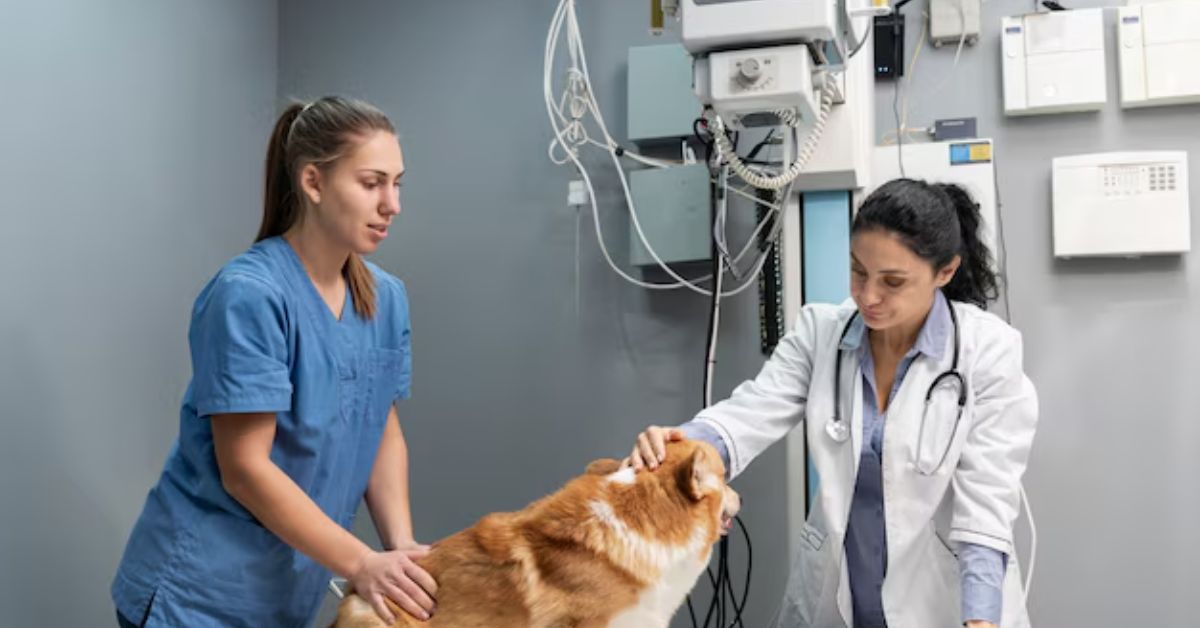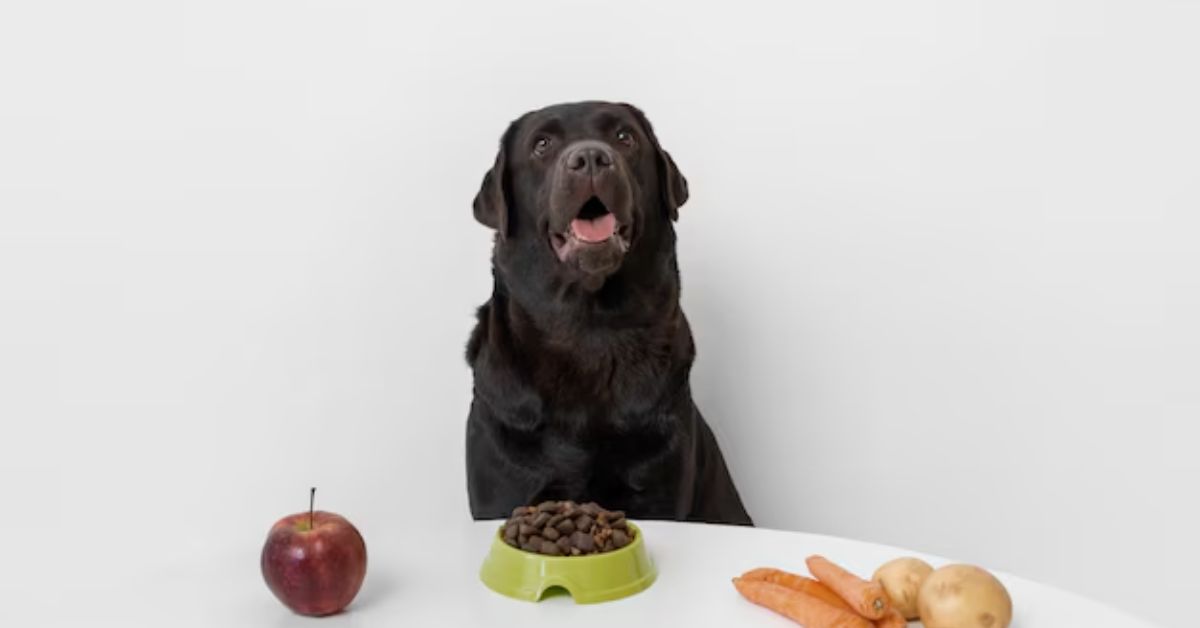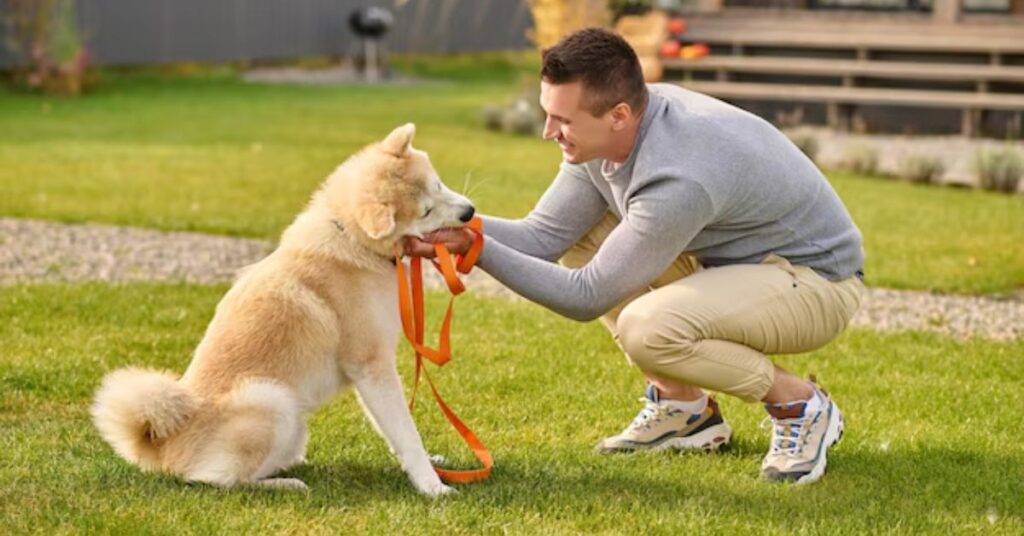Keeping your dog healthy and happy means ensuring their physical and emotional well-being. It involves providing the right care, nutrition, and environment for your pet to thrive. This includes everything from exercise to regular veterinary visits.
Every dog deserves a long, joyful life, and as pet owners, we play a crucial role in making that happen. Ensuring your dog is healthy and happy means meeting their basic needs while also offering them love, attention, and mental stimulation. It’s easier than you think!
With simple tips and consistent care, your dog can live a happy, healthy life. This guide will explore 10 essential ways to keep your dog in the best possible health, from proper nutrition to bonding activities.
Routine Veterinary Check-ups

Annual veterinary check-ups are crucial for monitoring your dog’s health. These visits help identify potential issues early, including zoonotic diseases, dental problems, or chronic illnesses. Regular wellness visits ensure that vaccinations like the leptospirosis vaccine are up-to-date, preventing dangerous infections. Discussing preventative medication, such as heartworm disease treatments or flea and tick prevention, is vital during these visits.
In the USA, vets recommend monthly preventatives for parasites like fleas, ticks, and heartworms. Establishing a record of your dog’s health history ensures timely vaccinations and treatments. Always prioritize tick prevention and consult your vet about the best options for your dog’s specific needs.
You May Also Read This Article: Book Reading Habits for Success: How to Read, Learn, and Grow
Provide Balanced Nutrition

A balanced diet for dogs is key to their overall well-being. High-quality dog food ensures proper nutrition, helping prevent obesity-related health issues in dogs. Avoid feeding harmful items like toxic foods for dogs such as onions, garlic, chocolate, and grapes, which can cause severe health problems. Including fresh water and protein-rich meals supports their energy needs.
Here’s a quick comparison of top USA dog food brands:
| Brand | Nutritional Value | Price (Monthly) |
| Blue Buffalo | High protein, grain-free | $50-60 |
| Hill’s Science Diet | Balanced for all breeds | $40-50 |
| Purina Pro Plan | Veterinary-recommended | $45-55 |
Additionally, avoid giving raw bones and dogs together as it increases the risk of salmonella. Always consult a vet to design a diet plan suited to your dog’s breed, size, and age.
Ensure Regular Exercise

Daily physical activity for pets is essential to maintain a healthy weight and avoid health risks of obesity in pets. Activities like walking or playing fetch improve cardiovascular health and muscle tone. Investing in a sturdy dog leads to safety during walks. For brachycephalic dog breeds, shorter, slower walks are recommended to prevent overheating.
USA summers can be challenging, so practice hot weather preparation for dogs. Schedule walks during cooler hours, and always carry water to avoid dehydration. Dog-friendly activities like hiking or swimming provide variety while keeping your dog lean and active.
Maintain Proper Grooming
Proper grooming is vital for your dog’s skin and coat health. Regular brushing removes dirt and reduces shedding, while trimming nails ensures comfortable movement. Grooming also prevents infections and maintains hygiene, especially for breeds requiring frequent care.
If you’re unsure where to start, consult grooming guides or visit professionals. Grooming includes bathing, brushing, and nail care. Remember, well-groomed pets are happier and healthier, free from issues like matting or overgrown claws.
Focus on Dental Care
Canine dental hygiene often gets overlooked, but poor oral care leads to pain and infections. Use dog-friendly toothpaste and brushes to clean their teeth. Dental chews and toys also help reduce tartar buildup.
Schedule dental exams during annual veterinary check-ups to catch any issues early. By addressing dental health, you’ll save your dog from complications like gum disease or tooth loss, ensuring their long-term comfort.
Preventative Healthcare and Medication
Preventive healthcare for dogs includes vaccinations, heartworm medication, and parasite control. These measures protect your pet from life-threatening illnesses. Many vets recommend spaying/neutering pets to reduce behavioral problems and prevent overpopulation.
Include monthly treatments for parasites like fleas and ticks in your pet care routine. Keeping a calendar for medication schedules ensures you don’t miss a dose. Prevention is always better than treatment.
Socialization and Mental Stimulation

Dog socialization helps prevent behavioral issues in pets. Introducing your dog to new environments, pets, and people improves their adaptability and reduces anxiety. Consider trips to local dog-friendly activities or parks for exposure.
To keep your dog mentally sharp, invest in puzzle toys for mental engagement. Interactive toys, training exercises, and games like hide-and-seek are excellent for boosting their mental health.
Training and Routine
Consistency is key when training your pet. Obedience training reinforces good behavior and ensures safety in public places. Teaching house rules and commands like sit, stay, or come creates structure, which dogs thrive on.
Establishing daily routines, including feeding, walking, and bedtime schedules, provides stability for your dog. Training and routine foster trust and understanding between you and your pet.
Provide a Safe and Pet-Proof Environment
Home safety for pets ensures their well-being. Pet-proof your home by securing harmful items and creating designated areas for rest and play. Fenced yards or secure outdoor areas allow your dog to roam safely.
During emergencies, such as natural disasters, prepare with an emergency preparedness for pets kit. Include essentials like food, water, a first-aid kit, and your dog’s identification tags. Always have a pet-friendly shelter and hydration plan in place.
Show Love and Attention

Love and attention for dogs are as vital as food and exercise. Daily interactions, cuddles, and playtime strengthen the bond between you and your furry friend. Dogs thrive on positive reinforcement, so show appreciation for their good behavior.
Spending quality time together fosters trust and ensures your pet feels valued. After all, a happy pet reflects the unconditional love for pets they provide.
FAQ’s
How often should I take my dog to the vet?
It’s best to take your dog for a veterinary check-up once a year, or more often if they have health issues.
What foods should dogs avoid?
Toxic foods for dogs like onions, garlic, chocolate, and grapes can cause serious harm.
How can I prevent my dog from getting parasites?
Use monthly preventatives for fleas, ticks, and heartworm medication as recommended by your vet.
What’s the best exercise for my dog?
Daily walks and playtime like fetch or swimming are great for keeping your dog active and healthy.
Is grooming important for my dog?
Yes, regular grooming keeps your dog’s skin and coat healthy and prevents infections.
Conclusion
In conclusion, keeping your dog healthy and happy requires attention to their physical, mental, and emotional needs. With proper care, including regular veterinary check-ups, a balanced diet, and daily exercise, your dog will enjoy a fulfilling and active life. It’s all about creating routines that support their well-being and offering plenty of love and affection.
By following these essential tips, you’re ensuring that your dog remains not just healthy, but also emotionally content. Whether you’re a new dog owner or a seasoned one, these steps are easy to incorporate into your daily routine. Show your dog the care they deserve, and they will give you endless love in return.







